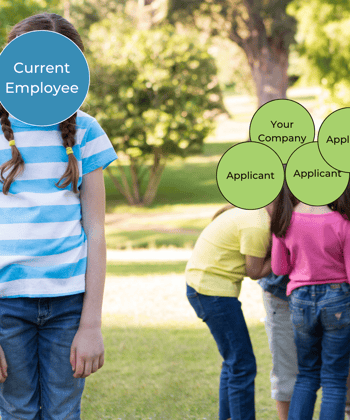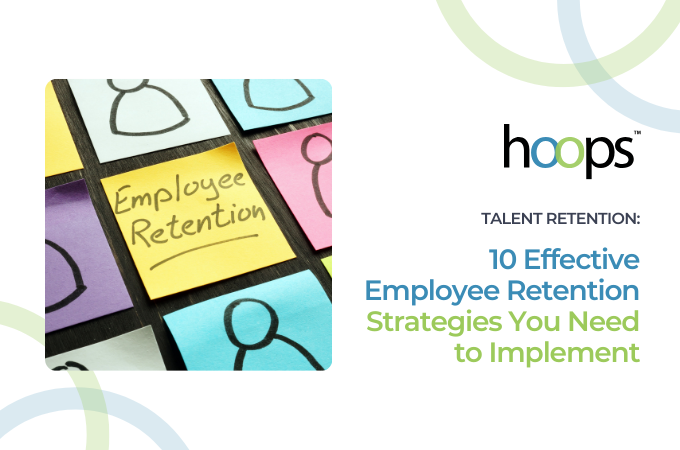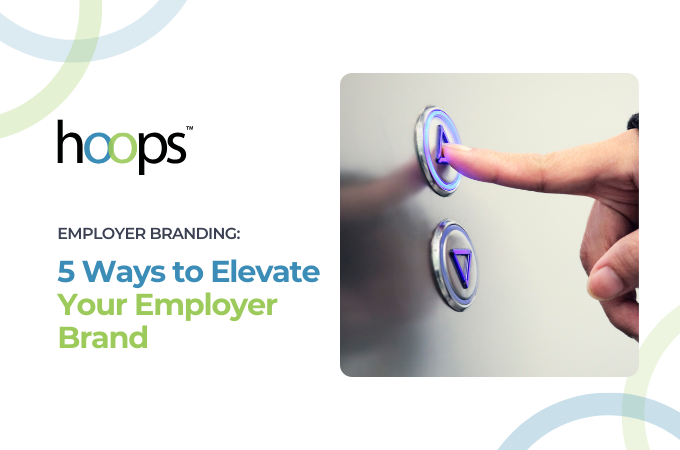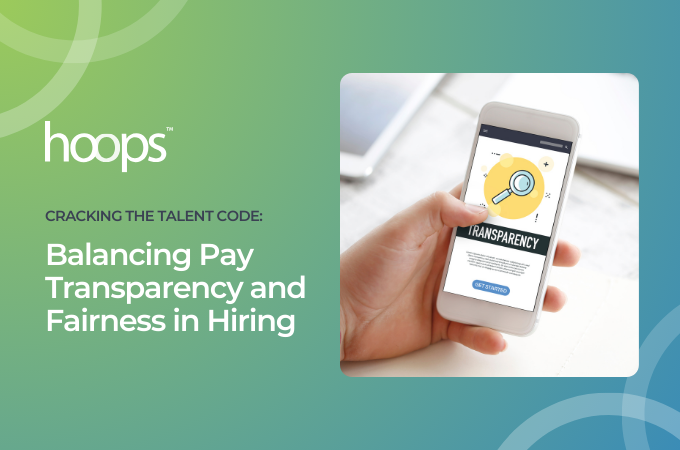Finding the right employees is always a crucial task for general managers. This task becomes even more complex when hiring for multiple locations. The process, if not managed properly, can be overwhelming, time-consuming, and riddled with mistakes.
In this article, we'll look at five common blunders made by general managers when doing multi-location hiring. Plus, we'll offer some helpful guidance on how to avoid these mistakes.
Here's what we're covering in this article:
- Lack of Communication and Coordination
- Ignoring the Culture Fit
- Relying Too Much on Standardized Interviews
- Failing to Address Multiple Time Zones
- Overlooking Existing Employees
Lack of Communication and Coordination
 Research from TalentBoard shows just how important it is to have clear and open communication throughout the hiring process. When you're working with multiple locations, this becomes more complicated and even more important.
Research from TalentBoard shows just how important it is to have clear and open communication throughout the hiring process. When you're working with multiple locations, this becomes more complicated and even more important.
Having more than one manager or interviewer that has to meet with candidates means more potential gaps in your hiring process. These gaps increase the likelihood that a promising candidate will get missed.
According to Workable, most candidates who accept interviews and jobs got a reply from the employer within 2 days of applying. When people look for work, they almost always apply at multiple places. If multiple managers mean missing follow-ups, you need to re-evaluate your process and focus on faster more consistent replies.
Most job openings today will still receive many applications. When hiring for more than one location, this can become a real problem if there's only one person responsible for everything.
This is where technology can really help. Finding the right applicant tracking system is virtually guaranteed to have a positive return on your investment. Automations and other pipeline management tools help even the smallest teams stay on top of high-volume recruiting needs. The best part might be how much they help with follow-ups.
Around 40% of companies don't respond at all to applications, which can damage your employer brand. Candidates want to know the outcome of an interview, even if it's not good news. Providing updates and feedback during the hiring process can help improve the candidate experience and protect the company's reputation.
Following up with unsuccessful candidates is extremely important too. You need to assume everyone who applies is going to advertise their experience with you. The question is whether they're going to be advertising something positive or negative.
Ignoring the Culture Fit
 When hiring, it's important to consider more than just a candidate's academic background or work experience. Consider OneInAMil's perspective on culture-driven recruitment. This approach focuses on hiring people based on how well they fit the company's overall values and vision.
When hiring, it's important to consider more than just a candidate's academic background or work experience. Consider OneInAMil's perspective on culture-driven recruitment. This approach focuses on hiring people based on how well they fit the company's overall values and vision.
This is supported by going out of their way to respect candidate decisions and avoid being pushy when making offers. We are in a competitive job market, and candidates are looking for more than just a good paycheck. A good cultural fit is a huge consideration; especially if the job requires lots of in-office time.
The culture of your company and the people you're hiring have to play a central role. Your culture should be considered part of your standard benefits package. In fact, great culture is an excellent way to compete for talent if your company can't afford more expensive benefits.
One of the best ways to showcase a strong culture is by validating and affirming differences in work commitments among employees. You can do this by showing employees that their individual thoughts, opinions, priorities, and goals are valued.
Relying Too Much on Standardized Interviews
 Structured interviews and copy/paste interview questions have been used in the hiring process for a long time. However, they may not give a full picture of a candidate's abilities. These interviews are intended to make evaluation easier.
Structured interviews and copy/paste interview questions have been used in the hiring process for a long time. However, they may not give a full picture of a candidate's abilities. These interviews are intended to make evaluation easier.
However, this can seem superficial and fail to show all that a candidate is capable of. This could misrepresent candidates and lead to missed opportunities for both the employer and the candidate.
To overcome these potential drawbacks, it can be beneficial to incorporate a variety of interview methods. For instance, panel interviews can offer a range of viewpoints on a candidate's responses, offering a more well-rounded assessment.
Situational tests can give valuable information about a candidate's problem-solving abilities. These tests show how the candidate might act in actual work situations. Employers can gain a more comprehensive understanding of a candidate's skills and potential by using a multi-method approach. This understanding can help them make more accurate hiring decisions.
However, while varying interview techniques can be beneficial, it's essential to ensure these methods are employed in a balanced way. Over-reliance on any one method can introduce its own set of limitations. Hence, creating an interview process that effectively captures the full scope of a candidate's abilities is crucial.
Failing to Address Multiple Time Zones
 The number of remote work opportunities increased 4x from Q4 2019 to Q3 2021, and the trend isn't slowing down. This extremely rapid shift has required so many changes that there's one huge difference that is often overlooked: time zones.
The number of remote work opportunities increased 4x from Q4 2019 to Q3 2021, and the trend isn't slowing down. This extremely rapid shift has required so many changes that there's one huge difference that is often overlooked: time zones.
If you're hiring across more than one time zone, your hiring process has to change (if it hasn't already). Assume your hiring manager(s) are based on the east coast, and you're hiring nationwide. If you're only scheduling interviews from 9-5 EST, you're going to have 2 related problems:
- Poor candidate experience. Candidates from farther West won't have the same availability to schedule appointments, which can lead to frustration and opting out.
- Missed opportunities with an ideal candidate. Again, the farther West you go, the less available you are for candidates. Your 9-5 EST translates to 6-2 EST, and that just won't work for a huge percentage of the population. In all likelihood, you're turning your candidate pool into a pond before the post even goes live.
You don't need to be available 12 hours a day, but you should have equal availability across time zones.
Overlooking Existing Employees
 Adding new employees to your team is always nice for a company, but your search always has to start internally. Companies often assume that employees are always hired for the position that fits them best. While sometimes true, there are many times that an employee joined your company for other reasons. They may like your culture, know people who work there, or just see enough skills overlap with the position you posted.
Adding new employees to your team is always nice for a company, but your search always has to start internally. Companies often assume that employees are always hired for the position that fits them best. While sometimes true, there are many times that an employee joined your company for other reasons. They may like your culture, know people who work there, or just see enough skills overlap with the position you posted.
The important takeaway here is that companies can't assume an employee was hired into the right position on day one. This is why internal mobility has to focus on horizontal and not just vertical movement.
With multiple locations, you add some amazing new opportunities for eager employees to grow and expand - literally - into new areas. Many employees won't love the idea of relocating, but there are a lot who will (especially at larger companies). In some cases, just the opportunity to move to a new city can be a huge attraction for current employees. This is even more true if you can help with relocation costs.
Whenever possible, your process for hiring employees should always start with sharing open positions internally. Taking this approach will give you one of the following results (and both are helpful):
- You'll get internal applicants that you might not expect. Even if the applicants aren't qualified, you now know what their career goals are and can help them become qualified enough.
- You won't get internal applicants and can move forward with an external job post without worrying about upsetting current employees.
Creating a culture of promoting from within is something lots of companies talk about, but few actually do it well. By focusing on this kind of internal growth, you'll develop a reputation that attracts talent when they're early in their career. Conveniently, you'll also hold on to your talent longer and worry less about employee turnover.
Conclusion
Hiring for multiple company locations requires careful coordination and planning. General managers (and their managers) have to be mindful of the differences between recruiting for one location and recruiting for many.
The good news is that the opportunities outlined above are just that - opportunities. By making these changes you won't just be able to attract more talented employees; you'll build a stronger culture company-wide.
That's the kind of positive feedback loop that all recruiting teams can get behind.
Want a hand with hiring at one or more locations?
Click below to contact the talented team at Hoops HR, and let us take care of the tough stuff so you can focus on growth!







